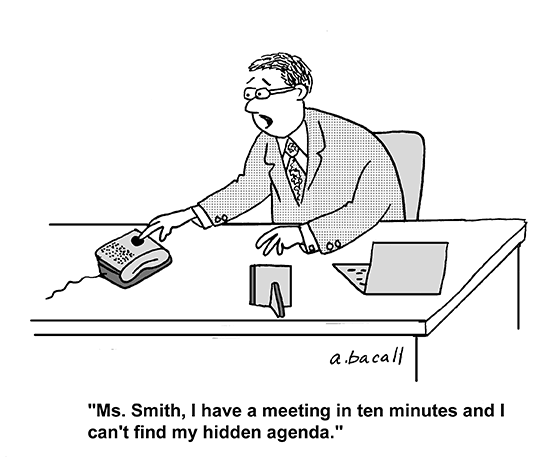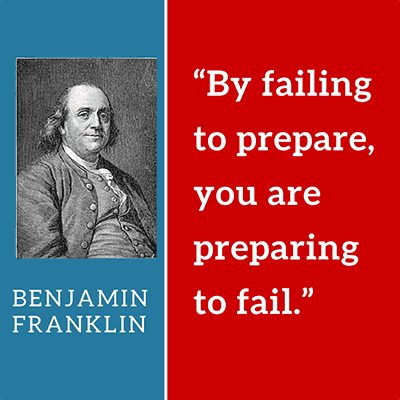Creating A Foundation for Changing Your Organization’s Meetings
Many people are unhappy with how their meetings work. Some of these people try to improve their meetings.
Of those who try to improve their meetings, a few achieve dramatic results.
Sweeping, business-changing, revolutionary improvement.
Others make small gains. One or two meetings run better, but the rest never rise above mediocrity.
The great majority of those who work to improve their meetings experience a momentary burst of effectiveness, which slowly deteriorates. The status quo reasserts, and the energy to change dissipates.
Why some succeed, whilst others fizzle
Many organizations recognize they have a problem with their meetings across the board. When every department and every team is impacted by one or more meetings that takes up more time than it’s worth, it’s natural to assume that the people running those meetings must not know what they’re doing.
When faced with a problem of “ineffective meetings” in this pervasive and generalized way, these organizations start by trying to improve meeting skills. The champions for change will read books on how to lead better meetings. Leaders send their project managers and department managers to days of specialized training, where they learn how to create a basic agenda, monitor time, and manage dysfunctional meeting behavior.
Unfortunately, training by itself rarely works.
The success of change driven solely by the acquisition of skills depends on:
- a clear plan for putting those skills into practice,
- the individual talents of the people learning the skills, and
- consistent modeling and reinforcement of those skills by leadership.
If the people sent for training lack the desire or ability to overcome barriers to the change, or if leadership fails to “walk the talk” when they meet, the effort to change the organization’s meetings fails.
More often, we see that sending individuals for meeting skills training, while well intentioned, misses a fundamental point.
Meetings are a team activity. The goalie is important, but you can’t just train the goalie and expect to win the match.
Systems Thinking Is Required
The way an organization meets is a fundamental part of the culture, touching nearly every person, structure, and business process.
Yes, the individuals involved need skills, just like individual drivers on the road need basic mastery of their vehicles. But for an effective transportation system, we need more than skilled drivers. We need well-designed routes that efficiently connect different business centers, traffic signaling to prevent accidents, regular maintenance to keep roadways smooth, and a way to bring new drivers safely into the flow. When the system is poorly designed, no amount of skilled driving can avoid gridlock and accidents.
If you think about it, the way people complain about meetings sounds a lot like how we complain about traffic jams. Meetings are one of the crucial ways we direct and route information in our businesses, and to work optimally, they need the same kind of well-considered systems design to keep information flowing.
In both cases, you need a systems approach to effect a meaningful change. This can be a significant change management challenge.
The good news: nowhere else in your business can you work on improving one habit and have such a widespread impact.
Meetings are what experts consider a “keystone habit”; one that, when you get it right, it creates dramatic improvements in every other part of the organization.
If you can fix your meetings, you can revolutionize your business.
What it takes to improve meetings
Over the years, we’ve seen what it takes to create change that sticks.
Here’s the short version:
- The change must be specific.
- The change must be led.
- The change must be reinforced.
Anyone familiar with classic change management will find this list obvious. What’s less obvious is this: when it comes to changing how an organization meets, people struggle most with the first requirement.
Organizations don’t know how to get specific enough about meetings to succeed.
To get specific, you must establish a shared vision of what success looks like, and create a plan for change that makes it very clear what everyone needs to do for the change to happen.
This is why basic meeting training fails to create lasting change.
Learning that you need an agenda or that you should recap next steps at the end of the meeting is generic good advice. It’s like learning to drive the speed limit and stay to the right – not wrong necessarily, but problematic if the speed limit isn’t posted or if you find yourself driving in a new country. The generic “rules” only go so far.
Laying the Foundation for Successful Change
Like any project, the effort to change how an organization meets should begin with a vision of what this change will make possible.
When asked, most people are very good at identifying what doesn’t work well in their meetings. We’re keenly aware of all the problems.
That said, many people don’t have a clear idea of what a good meeting looks like, nor what consistently effective meetings might do for them. No surprise: I’ve read dozens of excellent books on running better meetings, and I can say with confidence that there is no strong shared vision of success that applies to all meetings.
Without this vision – without understanding “what do you expect me to do here and what’s in it for me” – it’s virtually impossible to get everyone bought in to making the change.
Meetings are a tool used to help a group work together. When you understand what this tool is good for, and what it is not, you can begin to envision how it can best be applied.
The only way that we can live, is if we grow. The only way that we can grow is if we change. The only way that we can change is if we learn. The only way we can learn is if we are exposed. And the only way that we can become exposed is if we throw ourselves out into the open. Do it. Throw yourself.
C. JoyBell C.
To get specific, you need a mental model for planning your meetings, including:
- Meeting Strategy:
What meetings are for; the underlying function of meetings in the workplace - Meeting Execution:
How to plan and run meetings so that they achieve that function - Meeting Cadence:
How often and how long to meet to maintain that function -
Meeting Performance Maturity:
How to evolve meeting performance across the organization
With these fundamentals in mind, you then need to get specific about the plan for all the important meetings.
This is meeting design, where you get explicit about:
- Which meetings do we need to run and why? What is each meeting for?
- How will we run those meetings?
- What do we need to put in place to support those meetings?
- Given this new approach to meetings, what does each person need to do differently going forward?
Without a vision and a plan, the potential scope of change is limited.
Getting Started
A year from now you will wish you had started today.
Karen Lamb
Over the next several weeks months, we’ll publish the mental models and frameworks we use to design meetings, and that we’ve seen work well for other organizations.
Our goal is to create a do-it-yourself guide to planning and implementing a successful meeting culture overhaul.
If you don’t want to wait, or have no interest in a D.I.Y. approach, get in touch. We’d be happy to connect you with a team of professionals who can manage this change with you.
And if you have questions or feedback along the way, please let us know! Every conversation helps these frameworks get clearer, simpler, and more useful – and how delightful is that!
Next up: the Function of Meetings in the Workplace
Until then…
This post is the first in a six-part series exploring what it takes for companies to run consistently worthwhile meetings.
- This post! Introduction: Creating A Foundation for Changing Your Organization’s Meetings
- Meeting Strategy: Why meet? Understanding the Function of Meetings in the Collaborative Workplace
- Meeting Execution: The Underlying Structure of Meetings that Work
- Meeting Cadence: How often should you meet? Selecting the right meeting cadence for your team
- Meeting Design: How to Create Standard Agendas for Your Business
- Meeting Performance Maturity: How to evolve meeting performance across the organization



